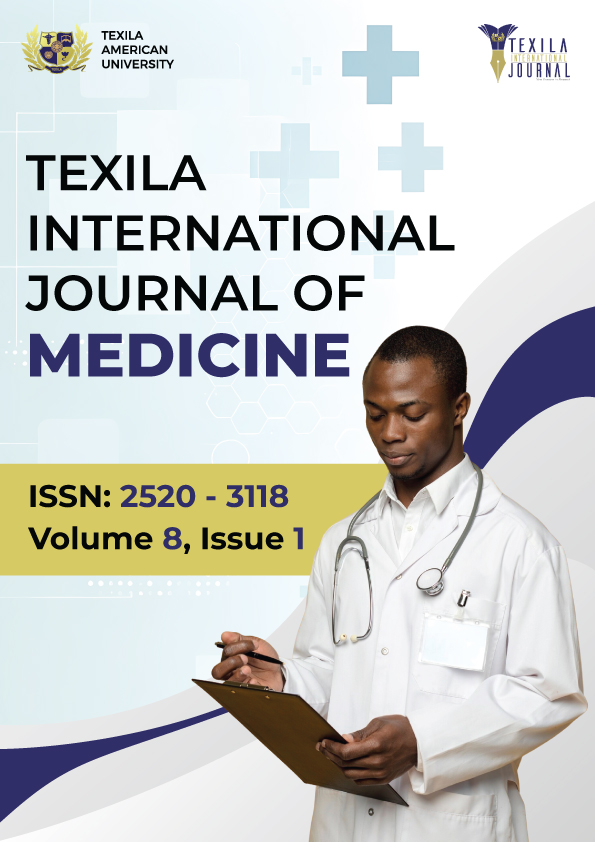References:
[1]. Chatterjee, S., Khunti, K., &
Davies, M. J., 2017, Type 2 diabetes. Lancet. 389 (10085), 2239–2251.
doi:10.1016/s0140-6736(17)30058-2.
[2].
Chan,
J. C. N., Lim, L.-L., Wareham, N. J., Shaw, J. E., Orchard, T. J., et al., 2020,
The Lancet Commission on diabetes: using data to transform diabetes care and
patient lives. Lancet. 396 (10267), 2019–2082.
doi:10.1016/s0140-6736(20)32374-6.
[3].
Sun,
Q., 2010, White rice, brown rice, and risk of type 2 diabetes in US men and
women. Archives of internal medicine. 170 (11), 961.
doi:10.1001/archinternmed.2010.109.
[4].
Vos,
T., Lim, S. S., Abbafati, C., Abbas, K. M., Abbasi, M., et al., 2020, Global
burden of 369 diseases and injuries in 204 countries and territories,
1990–2019: a systematic analysis for the Global Burden of Disease Study 2019. Lancet.
396 (10258), 1204–1222. doi:10.1016/s0140-6736(20)30925-9.
[5].
Squires,
E., Duber, H., Campbell, M., Cao, J., Chapin, A., Horst, C., Li, Z., Matyasz,
T., Reynolds, A., Hirsch, I. B. & Dieleman, J. L., 2018, Health care
spending on diabetes in the U.s., 1996–2013. Diabetes care. 41 (7),
1423–1431. doi:10.2337/dc17-1376.
[6].
Zhou,
B., Lu, Y., Hajifathalian, K., Bentham, J., Di Cesare, M., et al., 2016, Worldwide
trends in diabetes since 1980: a pooled analysis of 751 population-based
studies with 4·4 million participants. Lancet. 387 (10027), 1513–1530.
doi:10.1016/s0140-6736(16)00618-8.
[7].
Bhutta,
Z. A., Salam, R. A., Gomber, A., Lewis-Watts, L., Narang, T., Mbanya, J. C.
& Alleyne, G., 2021, A century past the discovery of insulin: global
progress and challenges for type 1 diabetes among children and adolescents in
low-income and middle-income countries. Lancet. 398 (10313), 1837–1850.
doi:10.1016/s0140-6736(21)02247-9.
[8].
Flood,
D., Seiglie, J. A., Dunn, M., Tschida, S., Theilmann, M., et al., 2021, The
state of diabetes treatment coverage in 55 low-income and middle-income
countries: a cross-sectional study of nationally representative,
individual-level data in 680 102 adults. The Lancet. Healthy longevity.
2 (6), e340–e351. doi:10.1016/s2666-7568(21)00089-1.
[9].
Scott,
A., Chambers, D., Goyder, E., & O’Cathain, A., 2017, Socioeconomic
inequalities in mortality, morbidity and diabetes management for adults with
type 1 diabetes: A systematic review. PLOS ONE. 12 (5), e0177210. doi:10.1371/journal.pone.0177210.
[10].
National
Population Commission of Nigeria (web). Date of access: 23/03/2025. https://citypopulation.de/en/nigeria/admin/NGA027_niger/.
[11]. Krejcie, R. V. & Morgan, D. W., 1970,
Determining Sample Size for Research Activities. Educational and
Psychological Measurement.
[12].
Lindström, J., and Tuomilehto, J., 2003, The
Diabetes Risk Score. Diabetes Care, 26, 725- 731. https://doi.org/10.2337/diacare.26.3.725.
[13].
Ugwu,
E., Young, E., & Nkpozi, M., 2020, Diabetes care knowledge and practice
among primary care physicians in Southeast Nigeria: a cross-sectional study. BMC
family practice. 21 (1). doi:10.1186/s12875-020-01202-0.
[14].
Dahiru,
T., Aliyu, A. & Shehu, A. U., 2016, A review of population-based studies on
diabetes mellitus in Nigeria. Sub-Saharan African Journal of Medicine. 3
(2), 59. doi:10.4103/2384-5147.184351.
[15].
Adewumi,
O. O., Oladele, E. O. & Jegede, O. S., 2022, Risk factors and prevalence of
diabetes mellitus among residents of Lagos, Nigeria. African Journal of
Health, Safety and Environment. 3 (1), 35–43. doi:10.52417/ajhse. v3i1.198.
[16].
Ogbera, A. O. and Ekpebegh, C., 2014, Diabetes
mellitus in Nigeria: the past, present and future. World Journal Diabetes
5:905–911.
[17].
Volqvartz, T., Andersen, H. H. B., Pedersen, L. H., &
Larsen, A., 2023, Obesity in pregnancy—Long‐term effects on offspring
hypothalamic‐pituitary‐adrenal axis and associations with placental cortisol
metabolism: A systematic review. European Journal of Neuroscience, 58(11),
4393-4422.
[18].
Arpey, N. C., Gaglioti. A. H. and
Rosenbaum, M. E., 2017, How Socio-economic Status affects Patient Perceptions
of Health Care: A Qualitative Study. Journal of Primary Care and Community
Health 8(3)169 -175.
[19].
Cosentino, F., Grant, P. J., Aboyans, V., Bailey, C. J.,
Ceriello, A., Delgado, V., & Wheeler, D. C., 2020, 2019 ESC Guidelines on
diabetes, pre-diabetes, and cardiovascular diseases developed in collaboration
with the EASD: The Task Force for diabetes, pre-diabetes, and cardiovascular
diseases of the European Society of Cardiology (ESC) and the European Association
for the Study of Diabetes (EASD). European heart journal, 41(2),
255-323.
[20].
Littman, A. J., Knott, C. J., Boyko, E. J., & Hawes, S.
E., 2020, Associations between racial and ethnic groups and foot
self-inspection in people with diabetes. Diabetes Care, 43(5),
956-963.
[21].
Dasgupta,
K., Khan, S. & Ross, N. A., 2010, Type 2 diabetes in Canada: concentration
of risk among most disadvantaged men but inverse social gradient across groups
in women. Diabetic medicine: a journal of the British Diabetic Association.
27 (5), 522–531. doi:10.1111/j.1464-5491.2010.02982. x.
[22].
Lyssenko,
V., Jonsson, A., Almgren, P., Pulizzi, N., Isomaa, B., Tuomi, T., Berglund, G.,
Altshuler, D., Nilsson, P., & Groop, L., 2008, Clinical risk factors, DNA
variants, and the development of type 2 diabetes. The New England journal of
medicine. 359 (21), 2220–2232. doi:10.1056/nejmoa0801869.
[23].
Redondo, M. J., Gignoux, C. R., Dabelea, D., Hagopian, W. A.,
Onengut-Gumuscu, S., Oram, R. A., & Rich, S. S., 2022, Type 1 diabetes in
diverse ancestries and the use of genetic risk scores. The Lancet
Diabetes & Endocrinology, 10(8), 597-608.
[24].
Zheng, Y., Ley, S. H., & Hu, F. B., 2018, Global
aetiology and epidemiology of type 2 diabetes mellitus and its
complications. Nature reviews endocrinology, 14(2),
88-98.
[25].
Yeh,
H.-C., 2010, Smoking cessation and the risk for type 2 diabetes mellitus. Annals
of internal medicine. 152 (11), 755.
doi:10.7326/0003-4819-152-11-201006010-00021.
[26].
Almdal,
T., Scharling, H., Jensen, J. S., & Vestergaard, H., 2008, Higher
prevalence of risk factors for type 2 diabetes mellitus and subsequent higher
incidence in men. European journal of internal medicine. 19 (1), 40–45.
doi: 10.1016/j.ejim.2007.05.011.
[27].
Haghighatdoost,
F., Amini, M., Feizi, A., & Iraj, B., 2017, Are body mass index and waist
circumference significant predictors of diabetes and prediabetes risk: Results
from a population-based cohort study. World journal of diabetes. 8 (7),
365. doi:10.4239/wjd.v8.i7.365.
[28].
Naseer,
I. M., Bibi, F. H., Alqahtani, M. G., Chaudhary, A., I. Azhar, E. A., Kamal, M.,
& Yasir, M., 2014, Role of gut Microbiota in obesity, type 2 diabetes and
Alzheimers disease. CNS & neurological disorders drug targets. 13
(2), 305–311. https://www.ingentaconnect.com/content/ben/cnsnddt/2014/00000013/00000002/art00015.
[29].
Wild,
S. H., & Byrne, C. D., 2006, Risk factors for diabetes and coronary heart
disease. BMJ. 333 (7576), 1009–1011. doi:10.1136/bmj.39024.568738.43.
[30].
Dyson,
P. A., 2010, The therapeutics of lifestyle management on obesity. Diabetes
Obes. Metab. 12, 941–94.
[31].
Villegas,
R., Liu, S., Gao, Y.-T., Yang, G., Li, H., Zheng, W. & Shu, X.O., 2007,
Prospective study of dietary carbohydrates, glycemic index, glycemic load, and
incidence of type 2 diabetes mellitus in middle-aged Chinese women. Archives
of internal medicine. 167 (21), 2310. doi:10.1001/archinte.167.21.2310.
[32].
Dataphyte,
2023, Sugar-sweetened beverages harming young people, cutting short lives.
Date of access: 9/04/2024. https://www.dataphyte.com/latest-reports/sugar-sweetened-beverages-harming-young-people-cutting-short-lives/.


